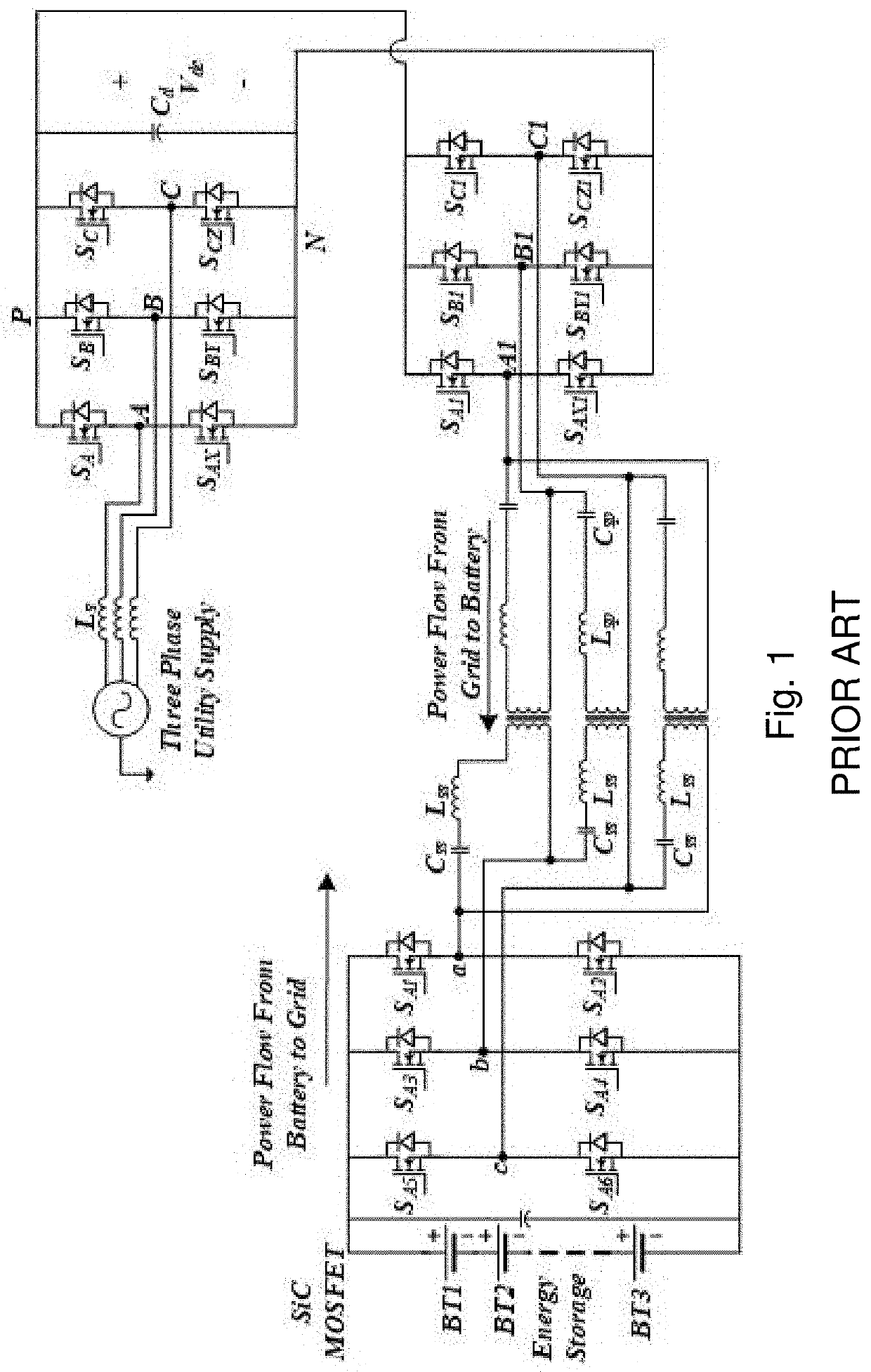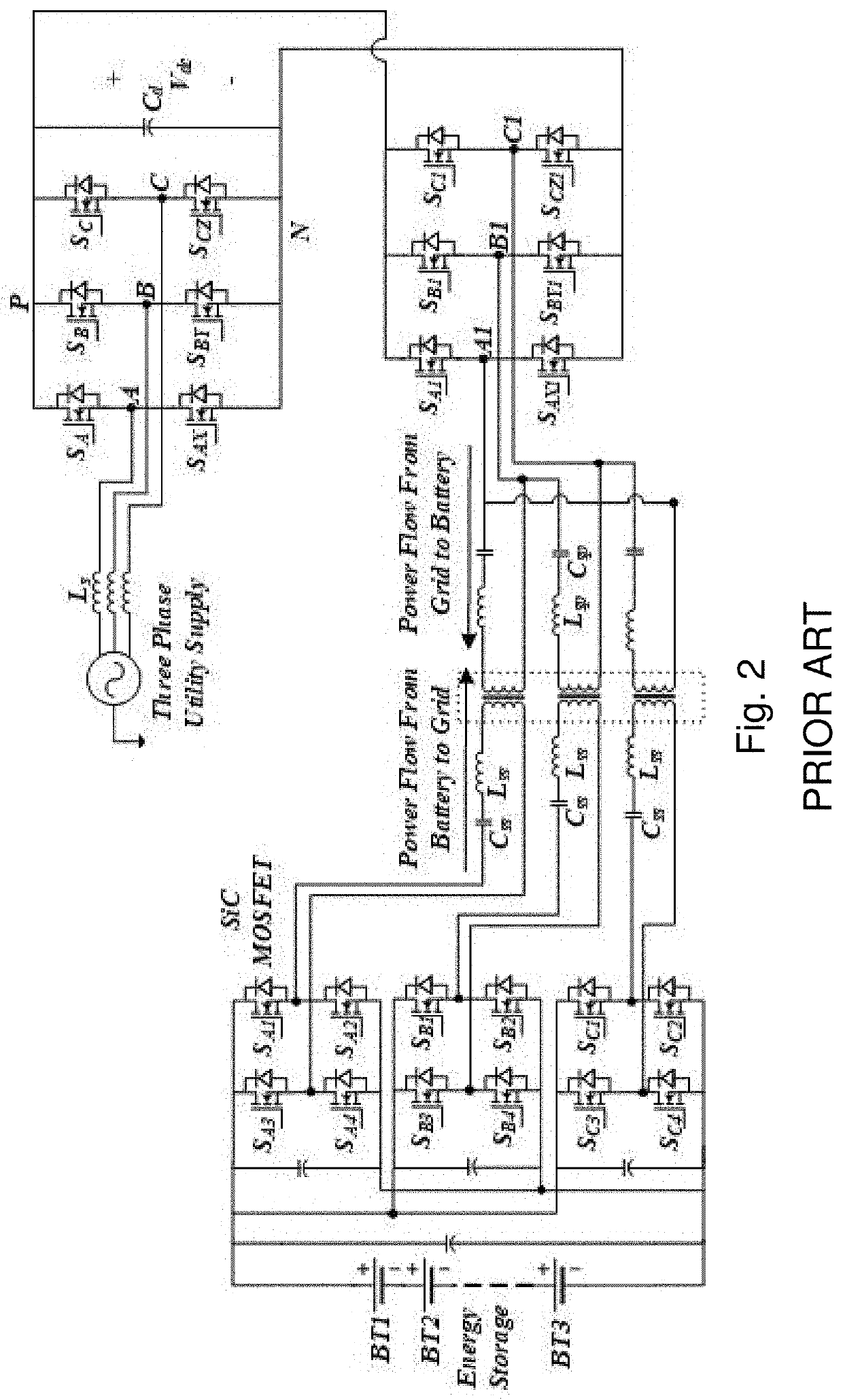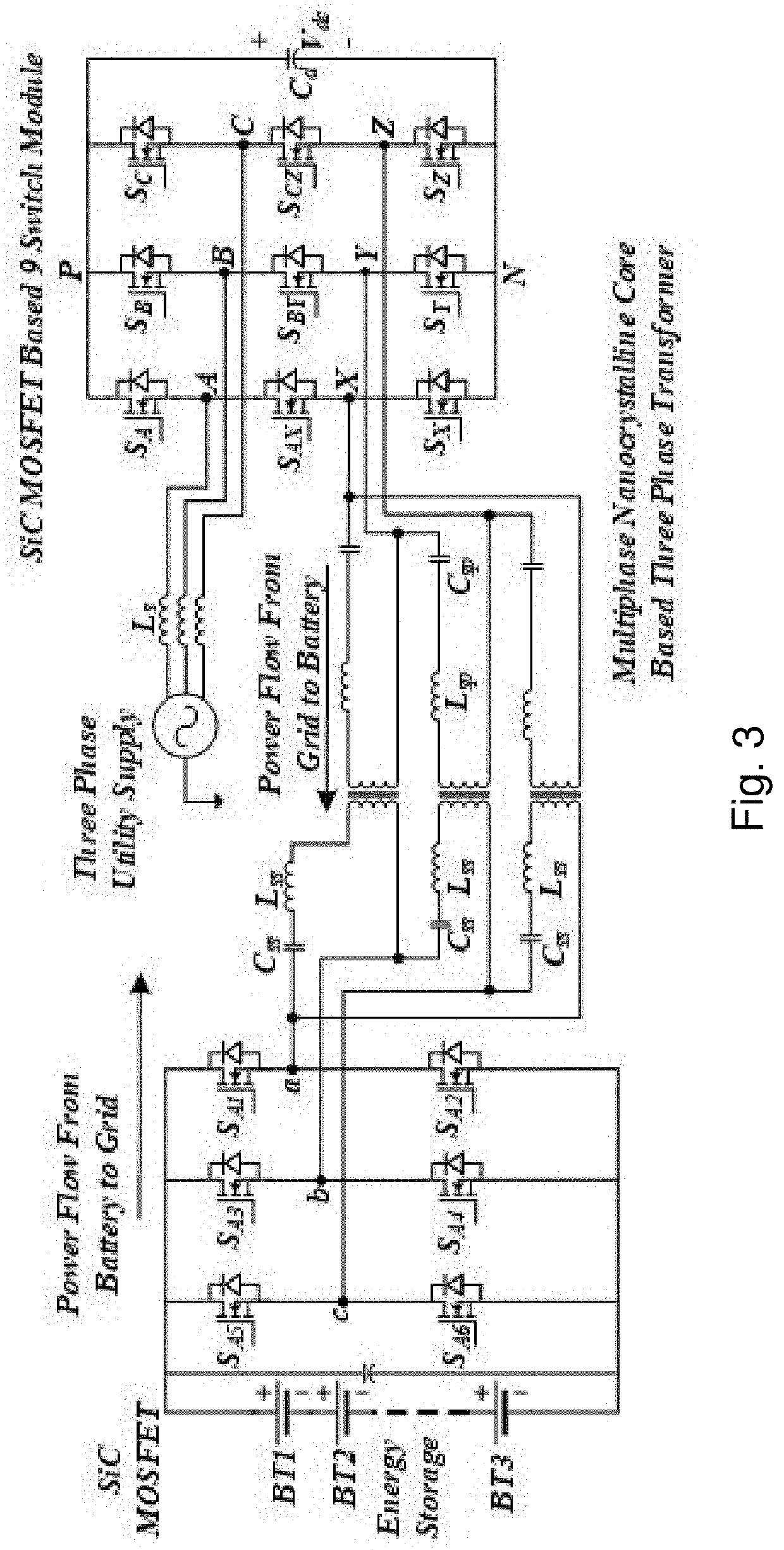Three phase bidirectional ac-dc converter with bipolar voltage fed resonant stages
a three-phase, bipolar voltage-fed technology, applied in ac-ac conversion, power conversion systems, climate sustainability, etc., can solve the problems of limiting the switching frequency and reducing the power density, and achieve the effects of facilitating superior performance and efficiency, reducing cost, and increasing power density and efficiency
- Summary
- Abstract
- Description
- Claims
- Application Information
AI Technical Summary
Benefits of technology
Problems solved by technology
Method used
Image
Examples
Embodiment Construction
lass="d_n">[0103]FIG. 3 and FIG. 4 show the two alternate topologies. In FIG. 3, the front-end side converter has three legs. Each leg has three switches connected as top, middle and bottom. The midpoints of top and middle switches of the converter are connected to the three-phase grid, with an interfacing inductor in each leg.
[0104]The midpoints of middle and bottom switches of the converter are connected to the primary side of three High Frequency (HF) Transformers through an L-C resonant link to provide galvanic isolation. The output side converter has three legs with two switches in each leg. The one terminal of secondary side of the three HF transformers are connected to each leg of the output side converter through another L-C resonant link. The other terminal of the secondary side of the three HF transformers are connected to the adjacent leg of the output side converter (i.e. to pints ‘b’, ‘c’ and ‘a’ respectively).
[0105]An electrolytic DC capacitor is connected at the DC li...
PUM
 Login to View More
Login to View More Abstract
Description
Claims
Application Information
 Login to View More
Login to View More - R&D
- Intellectual Property
- Life Sciences
- Materials
- Tech Scout
- Unparalleled Data Quality
- Higher Quality Content
- 60% Fewer Hallucinations
Browse by: Latest US Patents, China's latest patents, Technical Efficacy Thesaurus, Application Domain, Technology Topic, Popular Technical Reports.
© 2025 PatSnap. All rights reserved.Legal|Privacy policy|Modern Slavery Act Transparency Statement|Sitemap|About US| Contact US: help@patsnap.com



